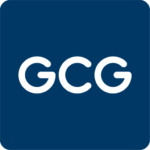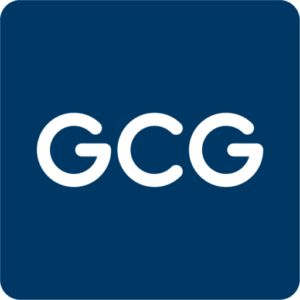
GCG Leadership Development Team
The workplace has never been more diverse—not just in terms of background or expertise, but in age. With five generations now working side by side, from Baby Boomers to Gen Z, leaders face a unique challenge: how to effectively manage and motivate a team with vastly different experiences, expectations, and work styles.
For younger leaders, this can feel particularly daunting. How do you earn the respect of team members who have been in the industry longer than you’ve been alive? How do you introduce new technologies or processes without alienating those who are more comfortable with traditional methods?
At Global Coach Group, we’ve seen firsthand how leaders who embrace these challenges can turn them into opportunities for growth, innovation, and stronger team cohesion. Here’s how you can navigate cross-generational dynamics and lead with confidence.
1. Build Trust Through One-on-One Relationships
One of the most common challenges for new leaders, particularly those managing older team members, is establishing trust. Age differences can sometimes create unconscious biases, with older employees questioning the authority of younger leaders. To overcome this, focus on building strong individual relationships with each team member.
- Listen Actively: Take the time to understand their perspectives, experiences, and concerns. Show genuine interest in their ideas and contributions.
- Communicate Clearly: Be transparent about your goals and decision-making process. Explain the “why” behind your actions to foster buy-in.
- Show Respect: Acknowledge their expertise and experience. Treat them as partners rather than subordinates.
For example, if you’re implementing new communication tools or processes, involve your team in the decision-making process. Ask for their input and address any concerns they may have. This collaborative approach can help bridge generational gaps and build mutual respect.
2. Adapt Your Communication Style
Different generations often have different preferences when it comes to communication. While younger employees may gravitate toward digital tools like Slack or Zoom, older team members may prefer face-to-face interactions or phone calls.
- Tailor Your Approach: Understand how each team member prefers to communicate and adapt your style accordingly. For instance, if an older employee is resistant to using a new project management tool, offer hands-on training or coaching and explain how it will make their work easier.
- Balance Digital and Personal Interactions: While digital tools are efficient, don’t underestimate the power of in-person or one-on-one conversations, especially when building rapport with older employees.
3. Focus on the “Why”
One of the most effective ways to motivate a multigenerational team is to connect their work to a larger purpose. Whether it’s achieving organizational goals, serving customers, or driving innovation, helping your team understand the impact of their contributions can inspire them to go above and beyond.
- Share the Vision: Clearly articulate how their work aligns with the company’s mission and goals.
- Highlight Success Stories: Celebrate wins and share examples of how their efforts have made a difference. This can be particularly motivating for older employees who value recognition and a sense of accomplishment.
4. Leverage Strengths Across Generations
Each generation brings unique strengths to the table. Younger employees may excel in technology and innovation, while older workers often have deep industry knowledge and strong interpersonal skills. As a leader, your role is to harness these strengths and create a collaborative environment.
- Encourage Mentorship: Pair younger employees with older ones to facilitate knowledge sharing. For example, a tech-savvy millennial can teach an older colleague how to use new software, while the more experienced employee can share insights on client management or problem-solving.
- Create Cross-Generational Teams: Assign projects that require diverse skill sets and perspectives. This not only fosters collaboration but also helps break down generational stereotypes.
5. Address Resistance with Empathy
Resistance to change is a natural human response, and it can be more pronounced in older employees who have seen countless management fads come and go. When introducing new tools or processes, approach the situation with empathy and patience.
- Explain the Benefits: Clearly outline how the change will improve efficiency, productivity, or job satisfaction.
- Provide Training and Support: Offer resources and time for employees to adapt. For example, if you’re rolling out a new communication platform, host training sessions and provide ongoing support.
- Be Open to Feedback: Encourage team members to share their concerns and suggestions. This not only helps you refine your approach but also makes employees feel valued.
6. Lead with Confidence and Humility
As a younger leader, it’s natural to feel self-conscious about your age or experience level. However, confidence and humility can go a long way in earning the respect of your team.
- Acknowledge Your Strengths: Recognize the skills and qualities that earned you the leadership role in the first place. Whether it’s your technical expertise, strategic thinking, or ability to innovate, lean into these strengths.
- Seek Mentorship: Don’t hesitate to seek guidance from more experienced leaders within your organization. This demonstrates humility and a willingness to learn, which can enhance your credibility.
7. Foster a Culture of Inclusion
Ultimately, leading a multigenerational team is about creating an inclusive culture where everyone feels valued and respected. Encourage open dialogue, celebrate diversity, and promote collaboration across age groups.
- Host Team-Building Activities: Organize events that bring team members together and help them connect on a personal level.
- Recognize Contributions: Celebrate the achievements of all team members, regardless of age or tenure. This reinforces a sense of belonging and mutual respect.
Conclusion
Managing a multigenerational team is no small feat, but it’s also an incredible opportunity to leverage diverse perspectives and drive innovation. By building trust, adapting your communication style, and fostering a culture of inclusion, you can create a cohesive and high-performing team that thrives in today’s dynamic workplace.
At Global Coach Group, we specialize in helping leaders navigate these challenges and unlock the full potential of their teams. Whether you’re a new manager or an experienced executive, our coaching programs are designed to equip you with the tools and insights you need to succeed in a multigenerational workplace.
Ready to take your leadership skills to the next level? Contact us today to learn more about our coaching services and how we can support your journey. Together, we can build a workplace where every generation feels empowered to contribute and grow.
At Global Coach Group (GCG), our network of over 4,000+ experienced coaches is dedicated to delivering tailored leadership coaching to help leaders become more self-aware, improve their communication strategies, and ultimately drive better team performance.
For leaders who want to become coaches or coaches looking to enhance their leadership coaching skills, Global Coach Group (GCG) provides a comprehensive leadership coaching certification program. GCG’s internationally acclaimed coaching tools and resources can help you improve your coaching proficiency and empower you to guide others.

GCG Leadership Development Team
Learn about the GCG's Coaching Tools
Measurable results, in LESS Time.
Reduce your session prep and follow-ups to just 15 minutes, while delivering coaching that improves leadership, team and business performances with 95% coworker satisfaction
